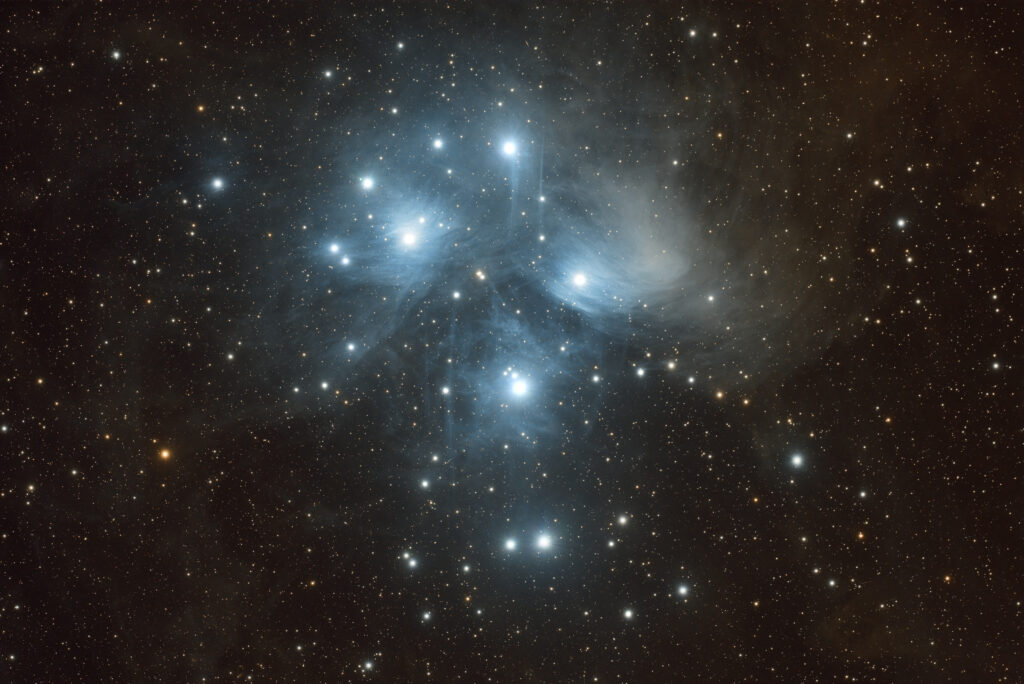
M45 aka The Pleiades, The Seven Sisters, Subaru (ever noticed the Subaru car logo?) FSQ-106ED with QHY268C
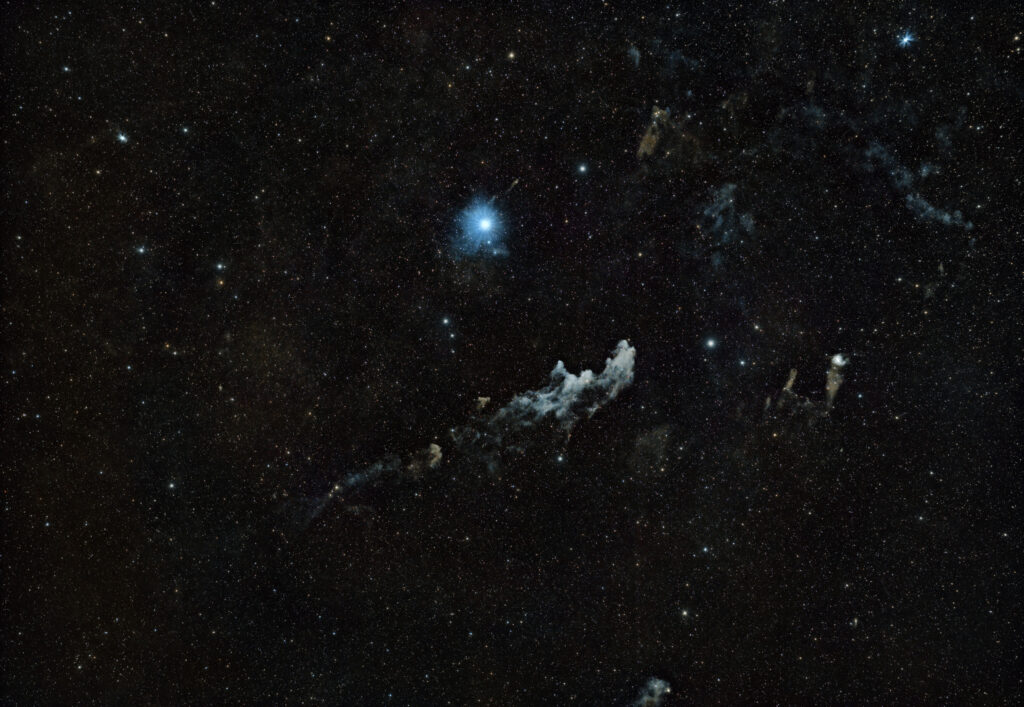
The Witches Head in Orion – Truly a difficult target and I pushed harder than the skies allowed. Canon R6 with Rokinon 135mm
We had four relatively clear nights in a row. Some didn’t start great but all four produced usable imaging time even if the nights aren’t much more than 4 hours of astronomical darkness this time of year.
A couple shots with the Canon 6D DSLR and a Rokinon 135mm wide open at f/2.
vdB 123 – Taken with FSQ-106ED and QHY268C OSC CMOS Camera on an AP900GTO Mount, 58 x 5min exposures totaling 4.8 Hours Exposure across two nights.
Sh2-136 Taken with FSQ-106ED and QHY268C OSC CMOS Camera on AP900GTO Mount, 79 x 5 minute exposures totaling ~6.6 Hours Exposure time across two nights.
M20 – The Trifid Nebula: ZWO 533C OSC CMOS Camera with AP92 Refractor on Atlas EQ-G Mount. 57 x 5min exposures for a total of 4.75 hours captured across two nights.
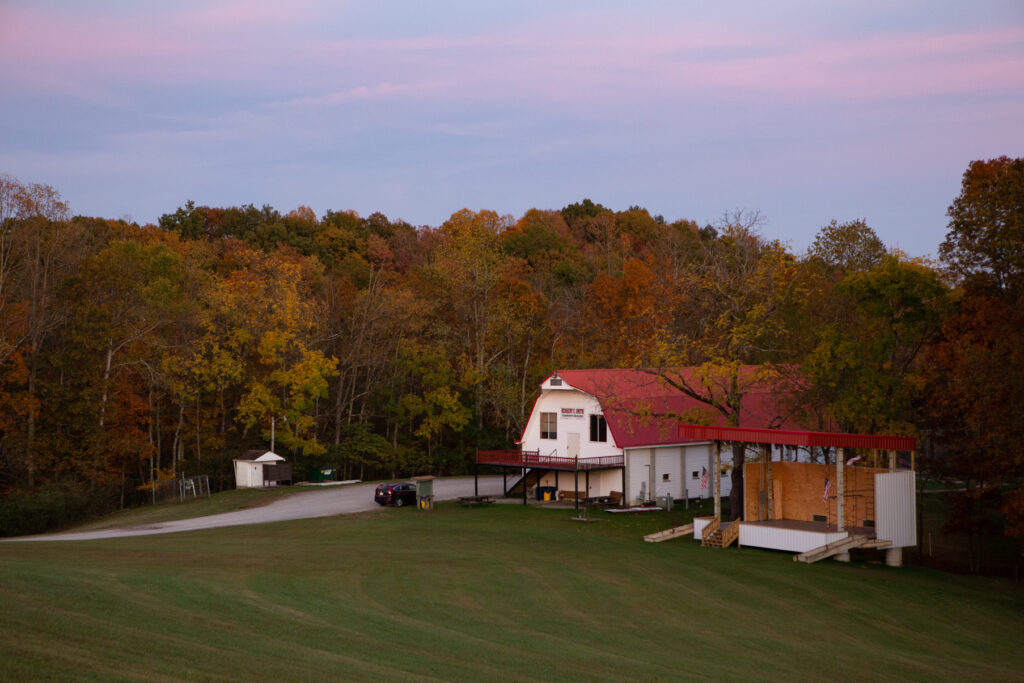
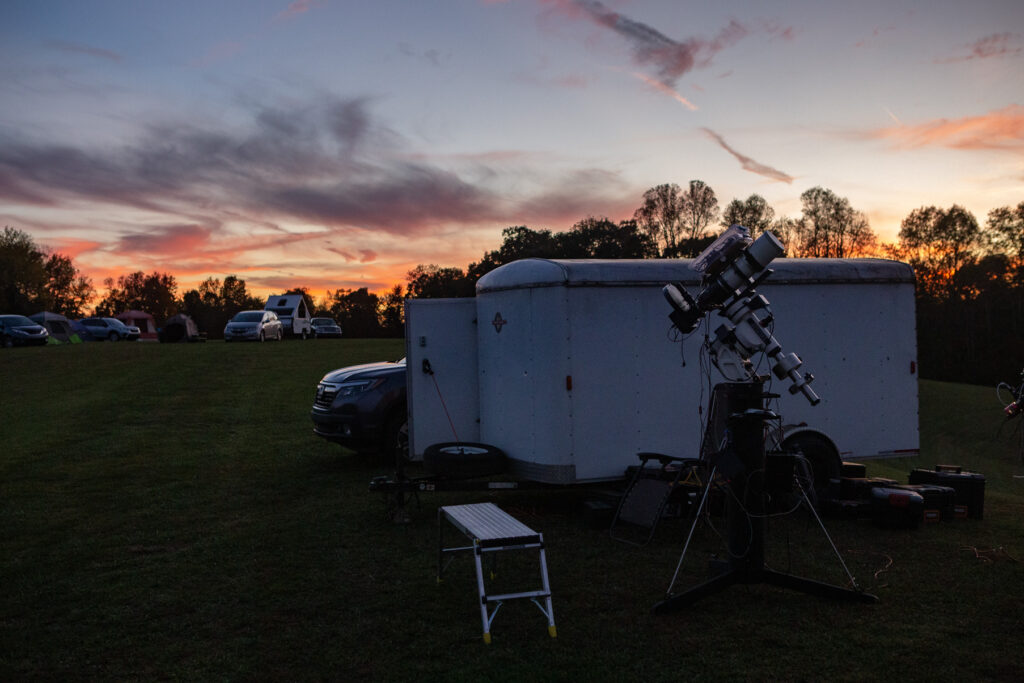
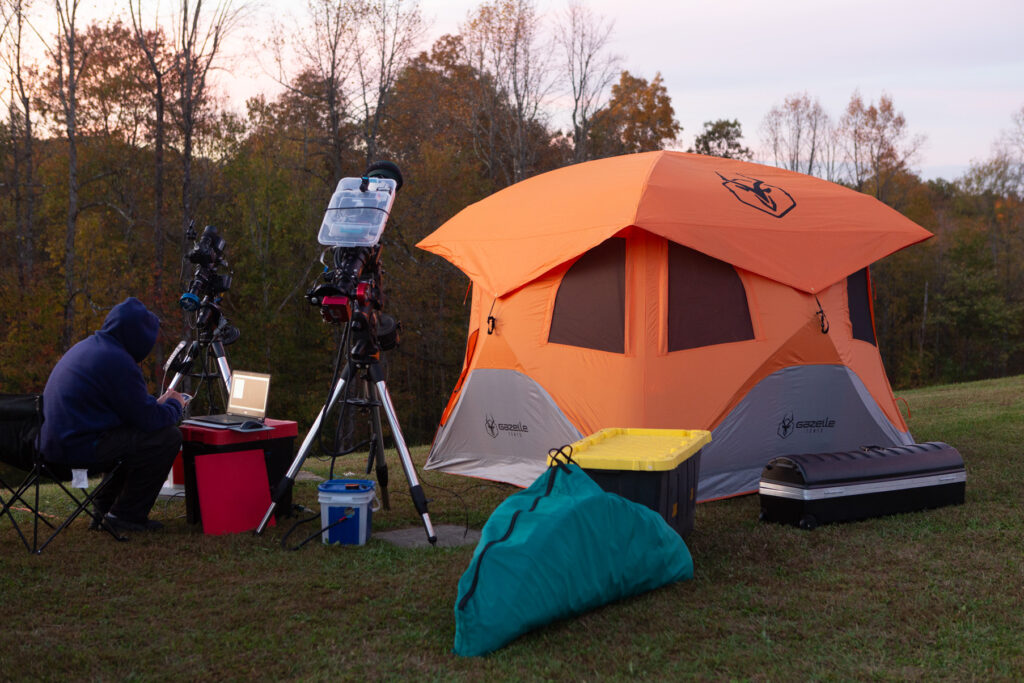
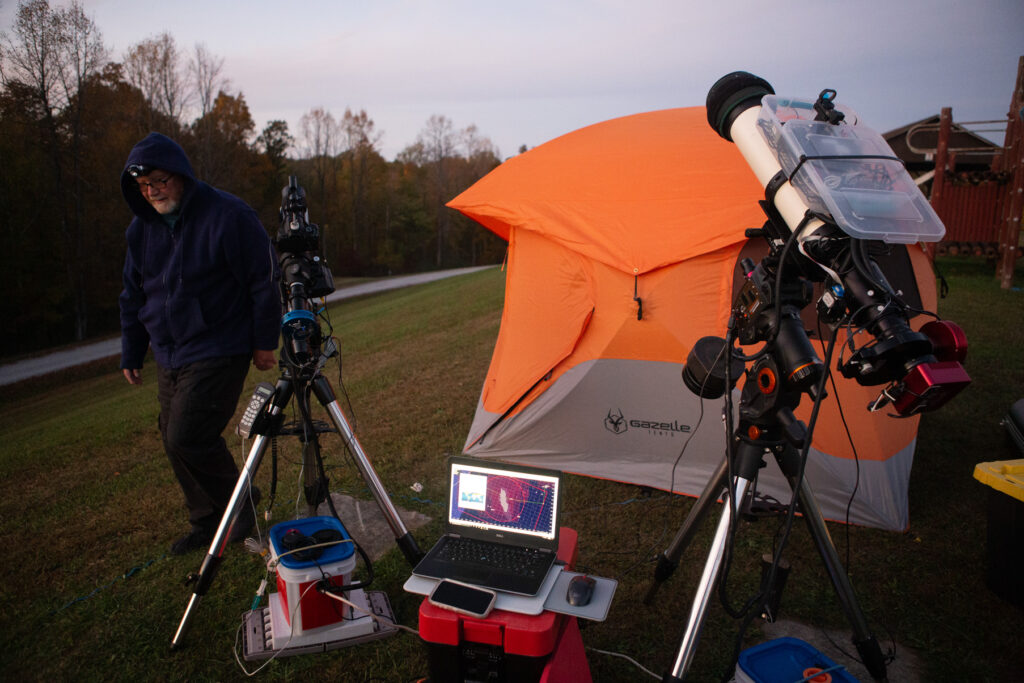
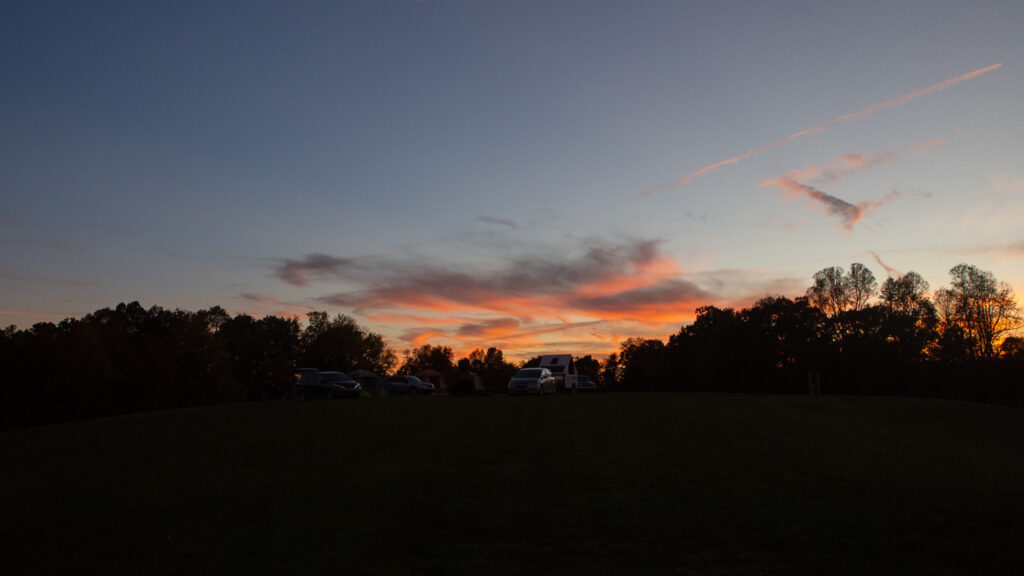
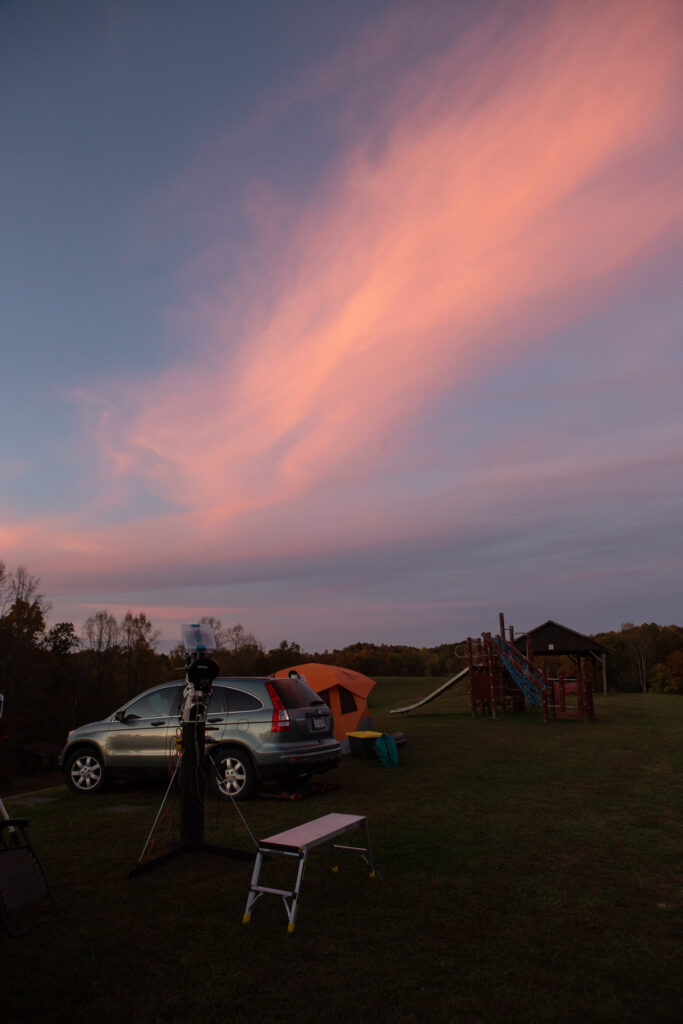
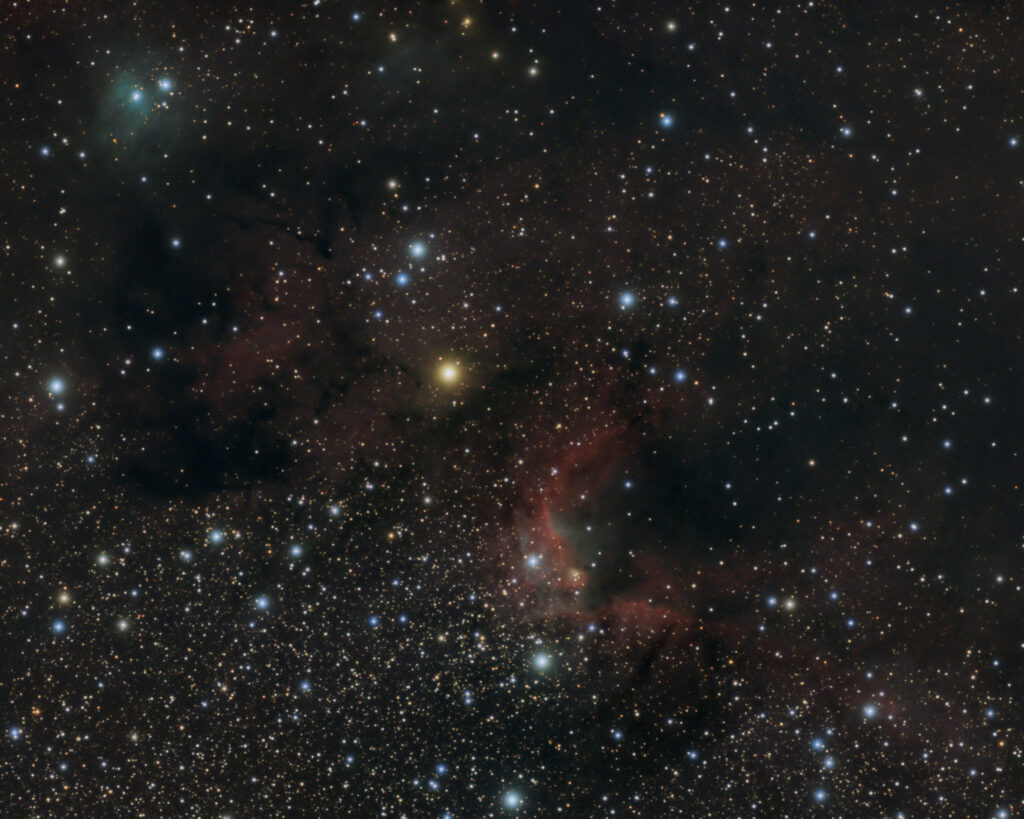
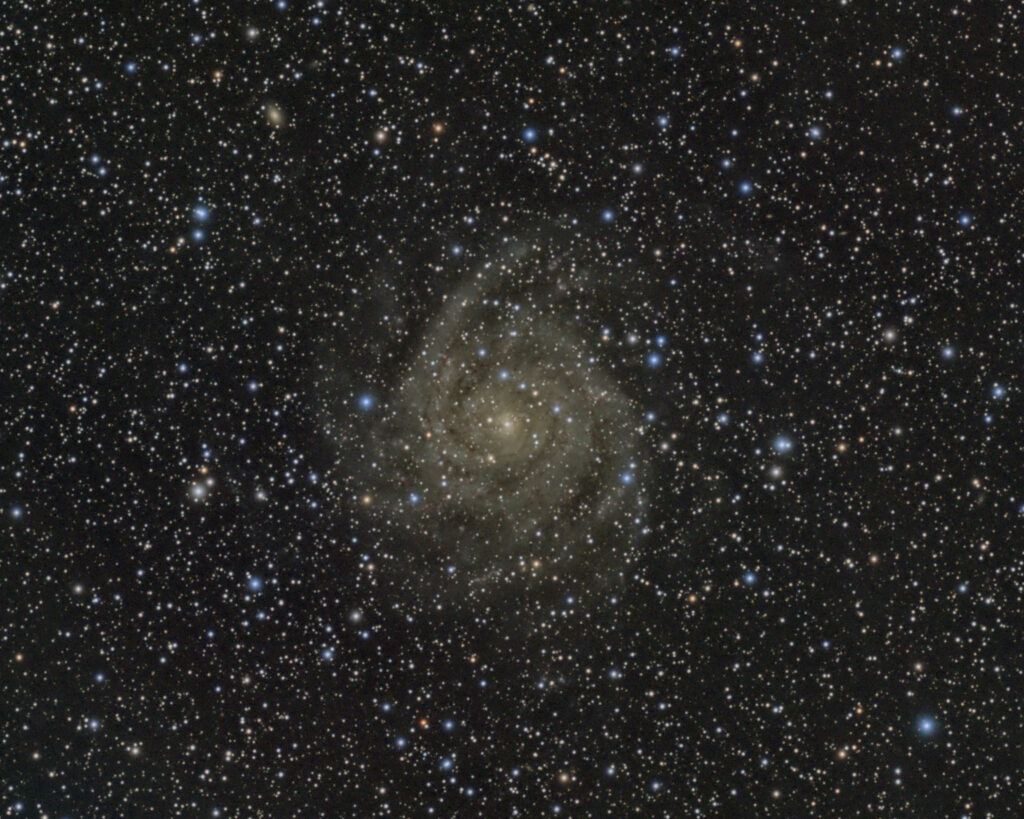
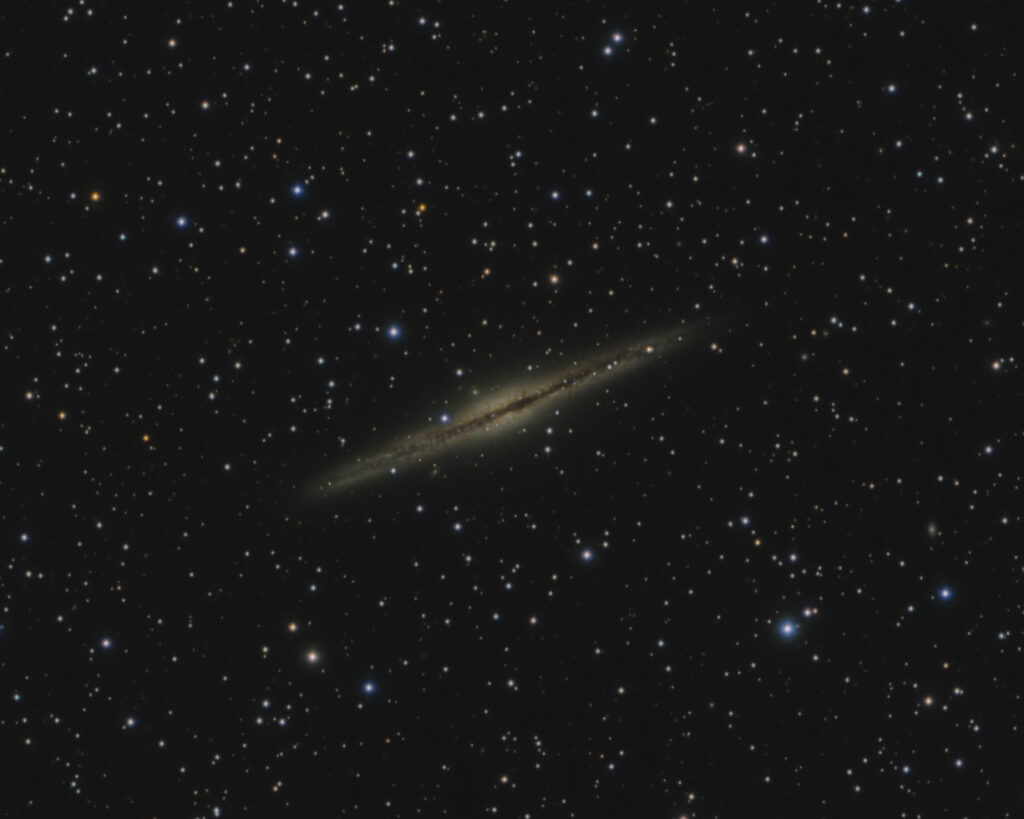
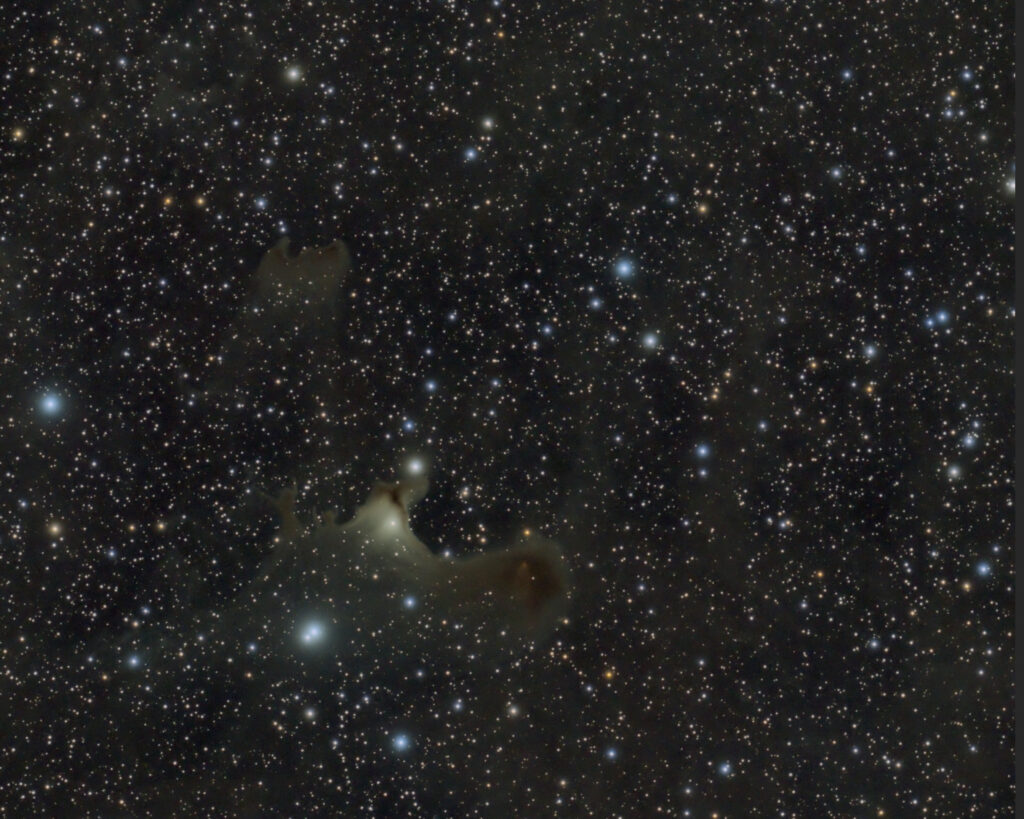
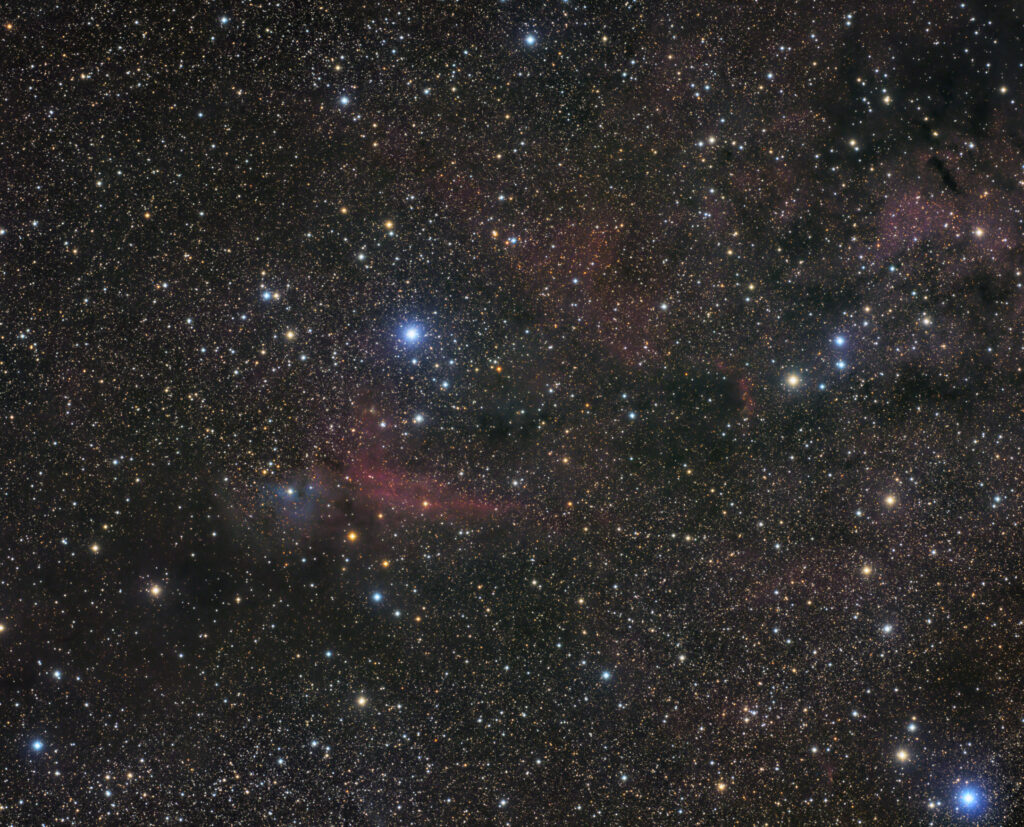
I attended the annual Calhoun County Park Star Party (Oct 5-7) for the first time this year. The sky wasn’t the best it could be. Friday and Sat night both had humidity and dew off the charts with variable fog that seemed to slide up and down the hill but never got so high that it killed observing. I can’t help but think that it impaired the images a little but it may have just been the choice of a faint target during a hazy time of year. Sky quality measurements topped and held pretty steady around 21.6 mag/arcsec^2. I’m sure on a crisp night it would be a little darker. While there were some small light domes on the horizon they weren’t hardly worth mentioning in my opinion. The park was wonderful and the staff was so friendly they even prepared a great meal for us on Sat night. In total about 16 people showed for the party from TN, WV, PA, OH, and KY. Special thanks to Larry McHenry for posting info about the star party and turning us onto this event and Calhoun as an observing site. He typically posts updates on Cloudynights star party forum for upcoming Calhoun events.
Since Calhoun is pretty dark I decided to go after a fainter full spectrum object than I could ever do from home. VdB objects (reflection nebulae compiled by Sidney van den Bergh) are great targets when looking for something off the beaten path but aren’t always what I would call showcase objects. VdB 14 and 15 make for a nice parring here in a rich park of the sky in Camelopardalis.
I made the 13 hour trip up to Cherry Springs State Park for the Annual CSSP Star Party hosted by the Astronomical Society of Harrisburg PA, Inc. I went up a few days before the star party since it’s always helpful to get a good spot. Those of us that were there early on Monday night were treated to a fabulous night with SQM measurements >21.9! Overall it was an amazing streak of clear weather for PA with a total of 4 imaging nights. I was hoping for one or two so as not to set my expectations too high so I was very pleased with four nights!
I even did a little visual at low power with a 4″ refractor. LDN 1795 (large 50’x50’dark nebula in Scorpius) looked absolutely amazing to me at 19X. First time I had a WOW moment visually.
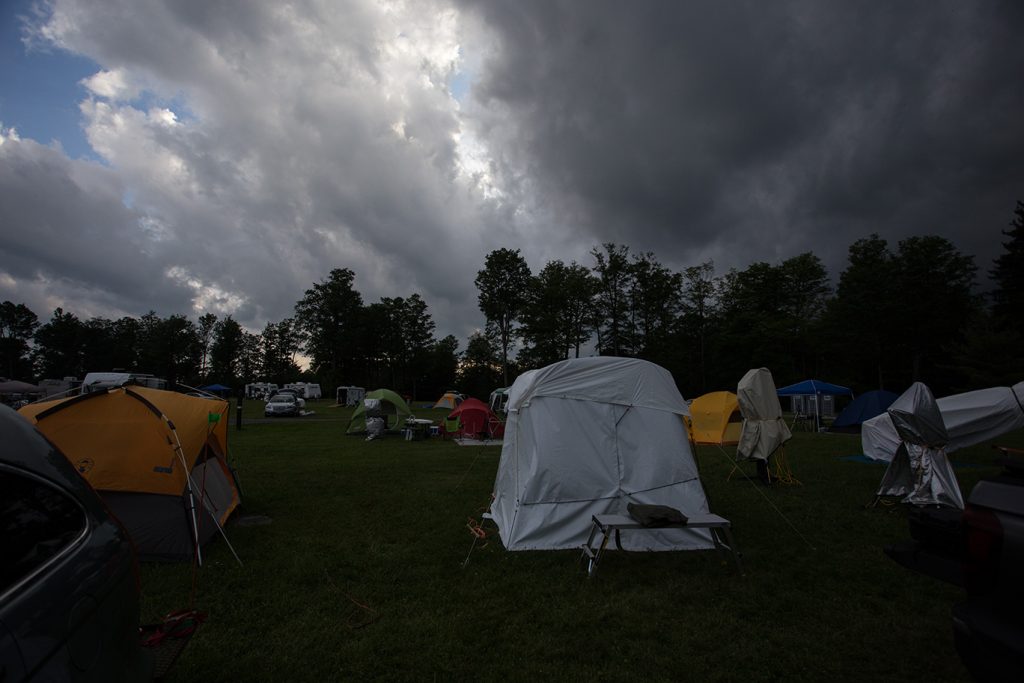
Just Some Slightly Concerning Weather Passing Through
Everything is buttoned up and locked down. Luckily it skirted us to the North.

B312 on the Edge of Sagittarius and Scutum
Canon 6D @ ISO 3200
Canon 70-200mm f/2.8 @f/4
8x240sec Exposure

M8 & M20 Nestled Among the Stars
Canon 6D @ ISO 3200
Canon 70-200 f/2.8 @ f/4
10x240sec total exposure

The North American Nebula And The Pelican
Canon 6D @ ISO 3200
Canon 70-200mm f/2.8 @ f/4.5
10x240sec exposure
Just getting around to publishing some pictures from the 2016 Black Forest Star Party at Cherry Springs State Park in Pennsylvania. What a great stretch of weather for PA! The nights weren’t the darkest or most transparent (SQM 21.4-21.5) nights I’ve had at CSSP but clear and a little murky was way better than the alternative after driving up from Knoxville TN. Had a great time with some old friends and good to see some old club members too.
Had a few imaging problems related to dithering and settle time / settle criteria that made me lose a fair number of shots but I got two images which, I have to be honest, I’m not real pleased with. They are however, more challenging objects, but would have come out better had the sky conditions been closer to the SQM 21.8 that I’ve seen before at CSSP. But, we take whatever quality of clear sky we can get during a pre-planned star party!
Taken 12/5/2015 from Cherohala Skyway, North Carolina. Sky quality was a little hazy early on and deteriorated by morning. SQM readings started around 21.1 and topped out around 21.2 mag/arcsec^2. This has always been a favorite object but I have always struggled processing it. It’s dim, it’s difficult, it always seems soft…. I’d prefer to shoot these dark dusty nebula from a darker site and if I ever get the chance I’ll be coming back to this object.
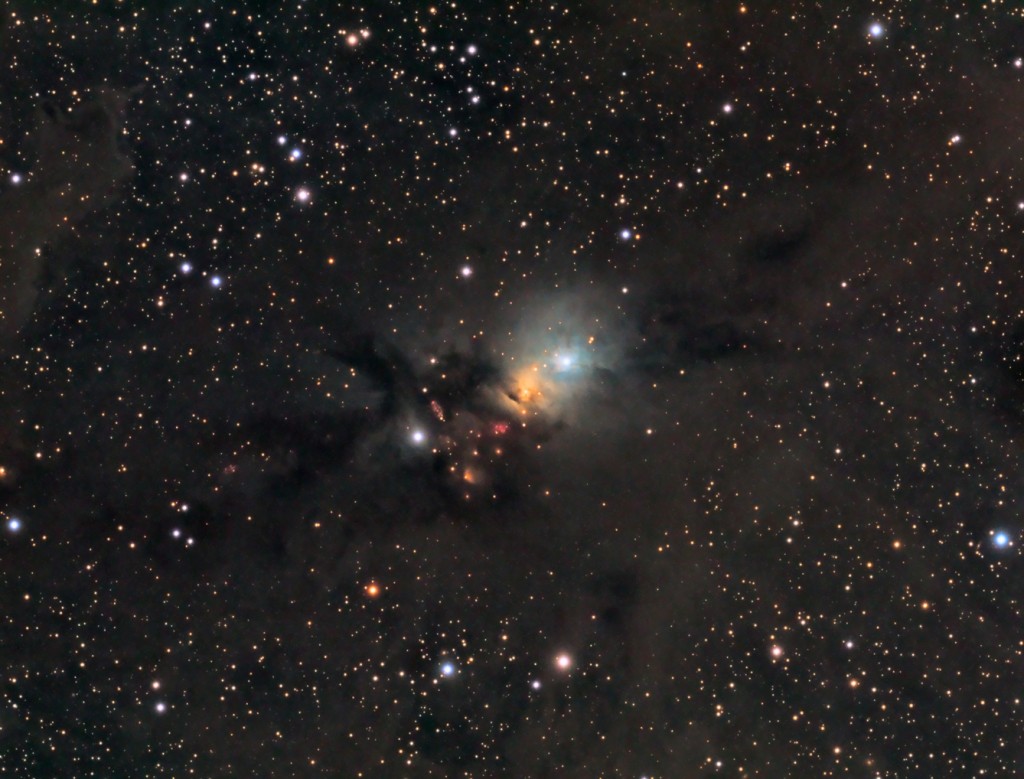
NGC 1333 Stellarvue SVQ100 100mm f/5.8 APO Apogee Ascent A694 CCD Atlas EQG Mount w/EQMOD SX-OAG w/ Lodestar Guider Baader LRGB Filters 21x10min Lum, 3x10x5min RGB Cherohala Skyway, NC SQM: 21.1-21.2